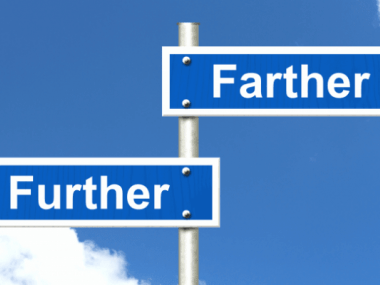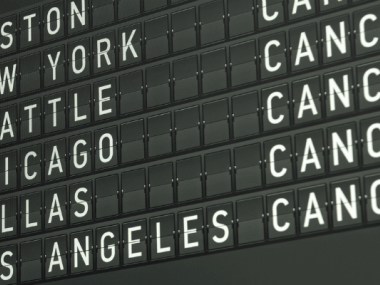Why Journalists Spell ‘Lead’ like ‘Lede’
Journalists “bury the lede,” not the “lead.” But why do they spell it that way? And what do HTK, TK, and CQ stand for? From “hed” to “spox,” here’s all the journo jargon that’s fit to print.
Newspaper journalists have no time to waste.
They have to get quotes from motor-mouthed politicians and deal with looming deadlines. They have to get the story quickly—and correctly.
That has been the industry mantra for more than a century—long before the internet turned the daily news cycle into a 24/7 centrifuge of information.
Since journalists are working in such a fast-paced environment, it makes sense that over the decades they’ve incorporated shortcuts into their lexicon. They’ve also adopted odd spellings, and although those quirks may befuddle outsiders, they help keep things clear for people with different jobs at a newspaper.
Each paper has its own nomenclature, but some terms are standard throughout the industry.
‘Lead’ versus ‘lede’
For example, the first paragraph of a news story is the “lead”—BUT—the people working the typesetting machines used metal letters made of lead. Same spelling (L-E-A-D), but a different pronunciation and, of course, a different meaning altogether.
So for clarity, the first paragraph of a news story is the “lede.” That’s spelled L-E-D-E. It looks funny to outsiders, but that strange spelling, originally used to head off ambiguities, is common among “ink-stained wretches”—also known as journalists.
There are, of course, different kinds of ledes.
A “hard-news lede” will deliver information about something that just happened:
Two dozen wildfires consumed 16,000 California acres Wednesday, driving thousands from their homes.
An “anecdotal lede” would take a more-focused approach, often adding a human element to the issue at hand:
Olga Kincaid raced out of her Mariposa home with her four-year-old daughter on her right hip and their beagle tucked under her left arm, heading for her minivan.
In the rear-view mirror, she watched the flaming structure collapse. Meanwhile, her husband, Dennis, was 20 miles east, battling a second blaze as a member of Ladder Company 15.
The Kincaids’ ranch was one of more than 1,500 California homes leveled by dozens of raging wildfires on Wednesday.
This approach sets aside the abstract notion of wildfires and instead highlights the human drama of those affected.
Nut graf
That last paragraph is the “nut graf”—short for “nutshell paragraph”—in which a reporter or columnist delivers the crux of the reporting. It’s often placed a few paragraphs into an article, especially one that uses an anecdotal lede, such as the one above.
Folo, reax, and thumbsucker
These abbreviations are generally time-savers, but in the past, eliminating keystrokes had a financial benefit too: When a story or budget (that is, a rundown of news items in the works) was transmitted by telegraph, the economy of total characters was important. Think about the character restriction on Twitter, and then put a price tag on it.
Now, back to the terms themselves.
A “folo” (that is, a follow-up story) would have a second-day lede on it:
Olga Kincaid sifted the charred remains of her home, finding two treasures that had been spared: her parents’ wedding photo and a novel autographed by Pete Hamill.
A folo might also be a “reax,” meaning a reaction story:
State and national politicians blamed each other for lagging response time in extinguishing existing fires and a lack of foresight in heading off future blazes. (Journalists often use synonyms to avoid repeating words like “fires.” You’ll also see infernos and even, on occasion, conflagrations.)
A lengthy perspective article, or “think piece” (often called a “talker” and sometimes derided as a “thumbsucker”), looks at the broader issues surrounding a trend:
For climate scientists, the abundant fires scorching West Coast states provide irrefutable evidence that dramatic shifts in temperature and humidity are creating an array of hazardous conditions worldwide.
B-Matter
Writing the lede is crucial, of course, but providing context is important, too. That’s where “B-matter” comes in. This is secondary information that has been previously published but provides context to the breaking news.
For example, a reporter might be expected to file a report about a local Planning Board vote on a controversial commercial development.
A savvy scribe will write the B-matter before the meeting, gathering background information such as the project’s size and location, as well as documenting public opposition to it. That could be 700 words the reporter doesn’t have to churn out on deadline. (That B-matter might also be used in what’s called a “curtain-raiser,” an article previewing the big vote.)
With the B-matter in place, the reporter simply writes “the top”—the lede detailing the result of the vote, along with a quote or two from the meeting.
The inverted pyramid
In any case, such a report is constructed in what journalists call the “inverted pyramid” structure, which prioritizes important information: First comes the most newsworthy information, then important details, then the background, for context.
This format ensures that if the story is cut for space, readers will still get the pertinent news.
What is “burying the lede”?
One thing reporters want to avoid is “burying the lede.” That happens when a significant development isn’t revealed until later in the story.
Here’s an example:
If the mayor says, in passing, that she’s glad the development was approved because the governor is a major investor in the project (and this was previously unknown), but the reporter neglects to mention that particular tidbit until the ninth paragraph, that’s burying the lede.
Big stories
Handled properly, that exclusive story is what’s known as a “scoop.” That’s when a reporter or outlet “breaks” a story that hasn’t run elsewhere. A scoop is a very big deal and might even get a front-page headline in the next day’s edition.
The editor might also suggest a “sidebar,” an adjacent piece of text related to the main story. In this case, the sidebar might be a rundown of the governor’s known business investments, or it could be a timeline—sometimes called a “tick-tock”—of the project’s evolution.
Broadsheets versus tabloids
In a broadsheet paper—the larger format used by The New York Times and The Washington Post—the top stories run “above the fold,” in the top half of the front page.
On the other hand, at a tabloid (such as the New York Daily News), the front page is reserved for headlines that “tease” to the major stories running inside.
A tabloid’s front-page headline is called the “wood,” and the term harkens back to the days of typesetting machines. Inside story headlines were set in lead, as we discussed earlier, but the larger front-page headlines were printed using wooden letters. Tabloid woods often feature puns or other striking wordplay.
Other shorthand spellings
“Hed” is short for headline. In part, this is used to distinguish it from a headshot (also sometimes called a “mug”), which is a candid or posed photo of a prominent figure cited in a news story.
“HTK” means “hed to come,” and “TK” (which means “to come”) refers to anything still in the works. For print newspapers, articles filed early in the day might be sent to the copy desk for editing before they get their placement on a page. Such an article might have a note reading “spex TK.”
Hey, we told you that journalists get goofy with abbreviations.
Anyway, that means the specs—for a “mainhed,” “dek” (that’s the smaller headline running underneath the main headline), kicker (a label running over a headline, usually used to tie a package together), photo caption (or “cutline”) and other elements—are being worked out.
The term “cutline” comes from the use of woodcuts in the printing of images in newspapers’ early days. The cutline would be a line of text explaining the content of the image.
By now you’ve realized that journalists like using odd letters in abbreviations. They’re supremely fond of the letter X, especially at the end of a word.
We’ve discussed reax—reactions to an event or statement, which can be the focus of a folo—that is, a second-day story. Here are a few more in which X marks the spot.
“Pox”: Short for police.
“Stax”: A shortening of statistics—often incorporated into a “grafik,” a simple chart or something more elaborate. The plural for “grafik” is, of course, “grafix,” with a final X.
“Spox”: Spelled S-P-O-X but pronounced “spokes,” as it is short for spokesperson or spokespersons.
“CX” or “correx”: A correction. This is used in wire transmissions to amend or clarify a report or on a daily news “budget”—the list of stories to be published on a given day—if the paper needs to run a correction on a previous article.
That’s different from “CQ,” which clarifies in the text that an oddity is, in fact, correct. It comes from the Latin cadit quaestio, which translates to “The question falls.” In other words, it has been answered.
If the subject of a story spells her name Maandyy (double-A and double-Y) rather than the more conventional Mandy, the writer would (or should) add CQ in brackets to spare the editors the headache of double- and triple-checking.
A newspaper story might come with “art.” That’s not a Renoir or a Picasso, but a photograph (“foto” or “pix”) or the aforementioned “grafik.”
Absent such visual elements, an editor or page designer might opt for a “pop-out” (as it’s known at some papers), which is a striking quote or piece of text that’s given special display. It’s also called a “pull quote.”
Other fun terms
“Beat.” This refers to a reporter’s area of specialization. It can relate to geography (such as covering particular towns) or subject matter (such as state or local politics, environmental issues, transportation, etc.).
The “banner” or “flag” runs at or near the top of the paper’s front page and is, basically, the paper’s logo.
The “masthead” (a name derived from nautical terminology and often used to describe the banner) usually runs on the editorial page and features names and titles of top-tier staffers: publisher, editor-in-chief, managing editor, etc.
The “bulldog” is the early edition of a newspaper, and the term is said to have numerous origins—so many that we can’t verify any of them.
In any case, many papers publish the bulldog of their Sunday edition on Saturday evening. News breaking later in the day will be added through “replates.” Those are new printing plates, which contain revised words and images, put onto the printing press for later editions.
The “lobster shift” is the overnight shift at a newspaper. It purportedly derives not from tasty crustaceans, but from “lob,” a British pejorative for newbies. They were assigned to these ghastly hours to keep them out of the way when important work was being done. With luck, they might pick up enough knowledge to make themselves useful. If not, they were boiled and served with drawn butter.
-30-
We’ll close, appropriately, with a bit of the Western Union “92 Code” that signals the end of a telegraphic transmission:
30-
Image courtesy of Shutterstock.





